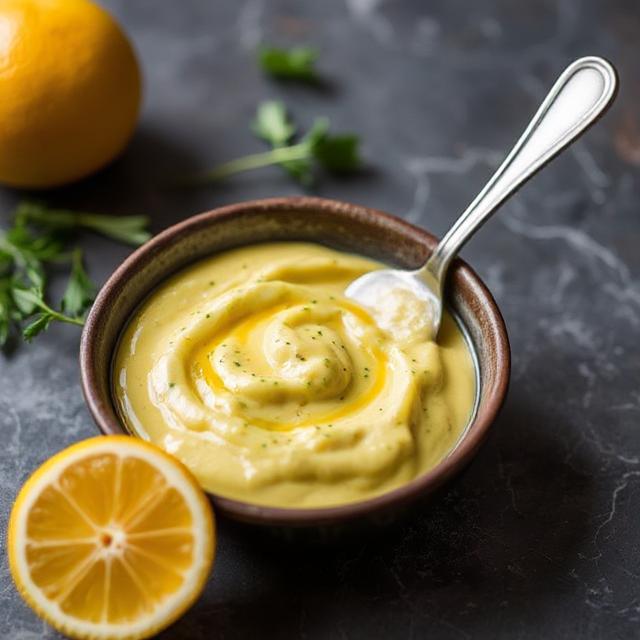Introduction to The Citrus Remoulade
In the world of culinary arts, sauces serve as the soul of many dishes, elevating simple ingredients into memorable meals. Among these, remoulade stands out as a versatile and flavorful condiment with roots in French cuisine, but with numerous regional variations. One particularly intriguing and vibrant variation is the citrus remoulade, a bright, tangy, and aromatic sauce that brings a fresh twist to seafood, salads, sandwiches, and more. This article explores the origins, ingredients, preparation, and culinary uses of citrus remoulade, highlighting why it deserves a prominent place in your gourmet repertoire.
Origins and Evolution of Remoulade
Remoulade originated in France, with historical roots dating back to the 17th or 18th century. Traditionally, it is a mayonnaise-based sauce infused with various herbs, spices, and condiments. The classic French remoulade typically includes ingredients such as Dijon mustard, capers, gherkins, tarragon, and parsley, offering a rich, tangy, and herbaceous flavor profile.
However, as the sauce traveled across regions and cultures, it adapted to local tastes and ingredients. In Louisiana, for example, remoulade became a spicy, horseradish-laden condiment used extensively with fried seafood and po’ boy sandwiches. Meanwhile, other variations incorporated ingredients like curry, lemon, or mustard to create diverse flavor profiles.
The citrus remoulade is a modern adaptation that emphasizes fresh citrus flavors—orange, lemon, lime, or grapefruit—adding brightness, acidity, and aromatic complexity to the traditional base. This variation aligns with contemporary culinary trends favoring fresh, vibrant ingredients that enhance rather than overpower dishes.
Key Ingredients of Citrus Remoulade
Creating a citrus remoulade involves blending an array of ingredients that harmonize to produce a balanced, flavorful sauce. While recipes can vary, the core components generally include:
- Mayonnaise or aioli: Acts as the creamy base, providing richness and body.
- Citrus juice and zest: Freshly squeezed lemon, lime, orange, or grapefruit juice imparts acidity and brightness; zest adds aromatic oils.
- Mustard: Dijon or whole-grain mustard contributes tang and depth.
- Capers and gherkins: Offer briny, tangy notes.
- Fresh herbs: Parsley, tarragon, chives, or cilantro add freshness.
- Spices and seasonings: Paprika, cayenne, black pepper, or smoked paprika can add heat and complexity.
- Additional flavorings: Worcestershire sauce, hot sauce, or a touch of honey or sugar to balance acidity.
The key is balancing the citrus’s brightness with creamy richness and a touch of savory or spicy elements.
Preparing Citrus Remoulade
Making citrus remoulade is straightforward and customizable. Here’s a basic method:
Ingredients:
- 1 cup mayonnaise
- 2 tablespoons fresh lemon juice (can substitute or combine with lime or orange juice)
- 1 teaspoon lemon or orange zest
- 1 teaspoon Dijon mustard
- 1 tablespoon chopped capers
- 2 tablespoons finely chopped gherkins or pickles
- 2 tablespoons chopped fresh parsley
- 1 teaspoon smoked paprika or cayenne pepper (adjust to taste)
- Salt and freshly ground black pepper to taste
- Optional: a dash of hot sauce or Worcestershire sauce
Instructions:
- In a bowl, whisk together the mayonnaise, citrus juice, and zest until smooth.
- Stir in the Dijon mustard, capers, gherkins, and herbs.
- Add spices and seasonings, tasting as you go to achieve your preferred flavor balance.
- Chill the sauce for at least 30 minutes to allow flavors to meld.
- Serve chilled with your choice of seafood, salads, or grilled meats.
Because citrus remoulade relies heavily on fresh ingredients, quality citrus and herbs are essential for optimal flavor.
Culinary Uses of Citrus Remoulade
Citrus remoulade is a versatile sauce that can elevate a variety of dishes:
1. Seafood:
It’s perhaps best known as a companion to seafood. Drizzle over grilled shrimp, crab cakes, oysters, or fried fish fillets. The citrus’s acidity cuts through the richness of fried or oily seafood, providing a refreshing contrast.
2. Salads:
Use as a dressing or dipping sauce for seafood salads, grain bowls, or mixed greens. Its bright flavor complements ingredients like avocado, fennel, and citrus segments.
3. Sandwiches and Burgers:
Spread on fish sandwiches or shrimp po’ boys for a flavorful punch. The sauce adds moisture and complexity, making simple sandwiches extraordinary.
4. Appetizers and Tapas:
Serve as a dipping sauce for calamari, shrimp tempura, or stuffed seafood items. It can also accompany vegetable tempura or grilled vegetables.
5. Meat Dishes:
While traditionally seafood-focused, citrus remoulade can also brighten grilled chicken, pork, or even tofu, especially when paired with fresh herbs and citrus slices.
Variations and Creative Twists
The beauty of remoulade lies in its adaptability. Here are some creative variations:
- Spicy Citrus Remoulade: Incorporate chopped chili peppers, hot sauce, or cayenne pepper for heat.
- Herb-Forward Version: Increase the amount of fresh herbs like tarragon, basil, or chervil.
- Sweet and Tangy: Add a touch of honey or agave syrup for a hint of sweetness that balances the citrus acidity.
- Exotic Flavors: Mix in a dash of curry powder, smoked paprika, or even ginger for a more complex profile.
Experimenting with different citrus combinations can also yield exciting results—for example, blood orange juice paired with lemon zest for a striking color and flavor.
Pairing and Presentation Tips
When serving citrus remoulade, presentation matters. Serve in small bowls alongside seafood platters or as a spread on a platter of grilled vegetables. Garnish with extra citrus zest, chopped herbs, or thin slices of citrus fruit for visual appeal.
Pair the sauce with crisp white wines such as Sauvignon Blanc, Albariño, or sparkling wines to complement the citrus and seafood flavors.
Health and Nutritional Aspects
Citrus remoulade is relatively healthy when prepared with quality ingredients. Using mayonnaise made from healthy oils, and balancing the richness with generous citrus and herbs, results in a flavorful yet light sauce. It’s an excellent source of healthy fats, antioxidants from citrus, and herbs with anti-inflammatory benefits.
However, like all mayonnaise-based sauces, it can be calorie-dense, so moderation is key if you’re watching calorie intake.
Final Thoughts
The citrus remoulade stands as a testament to the versatility and freshness that modern cuisine seeks. Its bright, tangy profile brings new life to traditional remoulade, making it an ideal accompaniment for seafood lovers and those seeking vibrant flavors. Whether drizzled over grilled fish, used as a dipping sauce, or incorporated into salads, citrus remoulade adds a lively, zesty dimension that can transform everyday dishes into gourmet delights.
By experimenting with different citrus fruits, herbs, and spices, home cooks and professional chefs alike can craft their signature version of this delightful sauce. Its simplicity, adaptability, and flavor make citrus remoulade a must-try for anyone eager to add a splash of brightness to their culinary creations.
Experience the zest of life with citrus remoulade—your new go-to sauce for adding a splash of sunshine to any dish!





